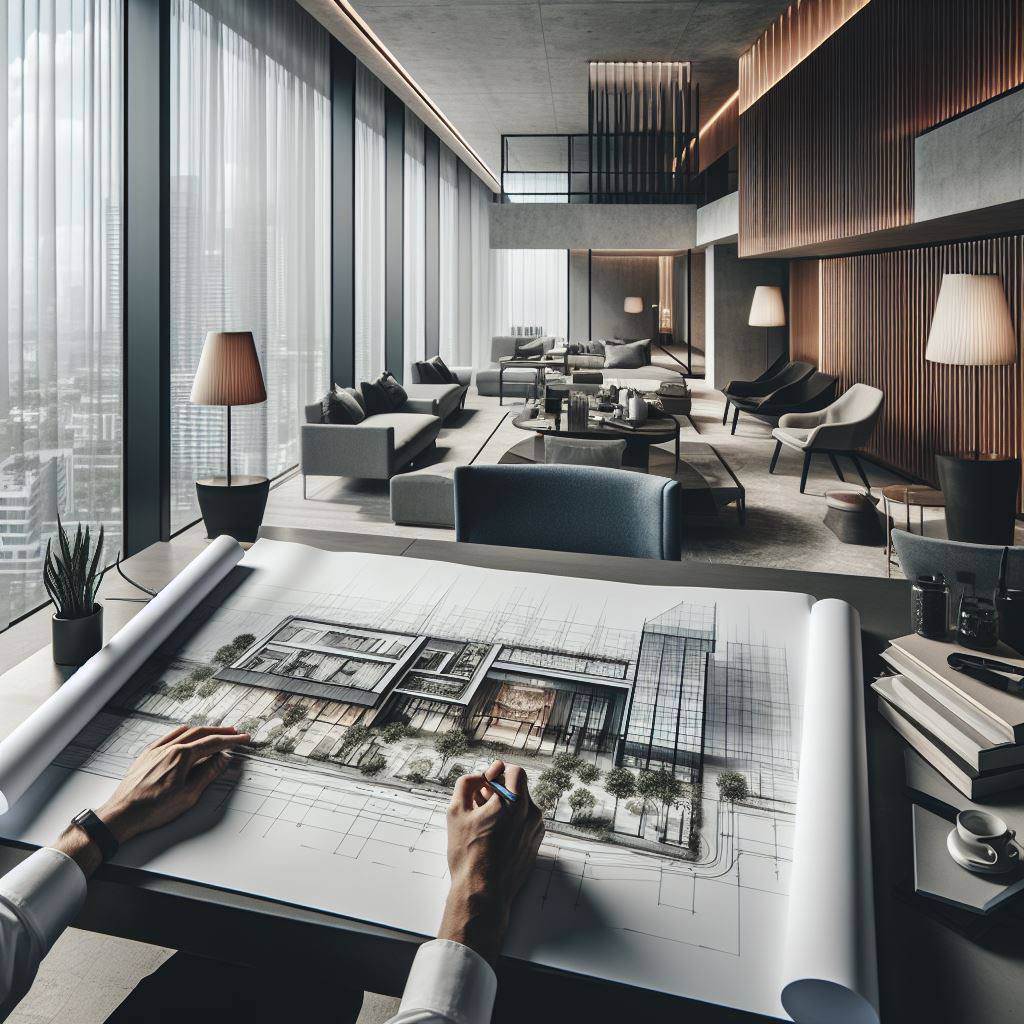
The trend of open-concept hotel design is swiftly reshaping what we expect from our travel experiences. This approach embraces fluid interiors, seamless spaces, and a heightened sense of modern connectivity, all aimed at fostering an environment that feels expansive and interconnected.
Just imagine a hotel lobby where the boundaries between reception, lounge, and dining areas blur, creating a harmonious flow that guides you effortlessly through the space. This is the heart of open-concept design – a realm where walls and barriers have given way to an inviting expanse that promises an experience to be lived.
The allure of these spaces lies in their versatility and adaptability. They accommodate a myriad of activities – from working on your laptop with a coffee in hand to socializing over cocktails as the evening unfolds. This seamless integration of functions caters to our needs and fosters a sense of community among guests, making every moment spent more meaningful.
The traditional hotel layout, with its clearly defined and often compartmentalized spaces, has been challenged by the rise of open-concept design. Hotels are now offering guests a sense of freedom and spaciousness that wasn’t possible before. The elimination of walls and partitions allows for natural light to flood the interiors, making spaces feel brighter and more welcoming.
This design ethos extends to how guests interact with the hotel environment. The fluidity of the design encourages exploration, inviting guests to wander and discover hidden nooks or vibrant gathering spots. It’s a design that acknowledges our human need for privacy and social connection, offering areas that cater to quiet reflection as well as communal engagement.
Enhancing Connectivity and Flow
The goal of the open-concept trend is enhancing connectivity—not just in terms of digital connectivity, which is expected in today’s world, but also in creating a physical and emotional connection between the space and its occupants. This design approach ensures that guests remain central to the hotel experience, with every element tailored to foster interactions. This can be interactions with fellow travelers, immersion in the local culture, or engagement with the hotel staff.
Careful attention is paid to the flow of the space, making transitions between different areas of the hotel feel intuitive and seamless. This fluidity ensures that guests can move effortlessly from checking in at the lobby to relaxing in the lounge or dining in the restaurant, without the journey feeling disjointed. It’s about creating a cohesive narrative throughout the hotel, inviting guests to be an active part of the experience.
The open-concept design also allows for flexibility and adaptability, enabling the space to evolve and meet the changing needs of guests. This adaptability means the hotel can easily accommodate different types of events, gatherings, or activities, enhancing the overall guest experience.
The design embraces natural light and open spaces, creating a sense of airiness and freedom that enhances well-being and comfort. This focus on openness and transparency encourages guests to explore and engage with their surroundings, whether it’s the hotel’s amenities, the local environment, or other guests.
Flexibility is Key
The success of open-concept design in hotels lies in its flexibility. Spaces are no longer assigned a single purpose but are instead designed to transform and adapt to different uses throughout the day. A breakfast area by morning can become a coworking space by day and a lively bar by night. This adaptability reflects the dynamic nature of modern lifestyles.
Hotels are increasingly adopting movable furnishings and adjustable lighting to easily change the ambiance and functionality of a space. This ability to pivot according to the needs and mood of the moment is what sets open-concept hotels apart, making them not just places to stay, but destinations in their own right.
Spaciousness and a Sense of Freedom
One cannot talk about open-concept design without mentioning the sense of spaciousness it creates. Even in hotels where the physical area is limited, the strategic removal of barriers and the thoughtful arrangement of spaces can make the environment feel larger and more open. This sense of freedom is deeply appealing to modern travelers, who often seek escapes from the confined spaces of city living.
Moreover, this spaciousness allows for a better showcase of design elements, be it art, furniture, or innovative architectural details. Hotels have the opportunity to create striking first impressions, turning their interiors into a canvas that reflects their identity and ethos. This imprints memorable images in the minds of visitors.
A Trend With Staying Power
The trend of open-concept hotel design is more than just a passing fad. It’s a reflection of broader shifts in how we live, work, and interact. As travelers continue to seek out experiences that blend luxury with a sense of community and connection, the design of spaces will evolve to meet these desires. Open-concept hotels, with their focus on fluidity, flexibility, and a sense of spaciousness, are leading the way in this new era of hospitality.
A modern hotel is no longer a linear path but a fluid experience that offers a sanctuary and a social hub. It’s a trend that speaks to our longing for experiences that are enriching and authentic, offering not just a place to rest but a space to live, work, and connect.
In embracing open-concept design, hotels are crafting experiences that resonate on a deeper level with guests. This transformative approach to hospitality design is setting the stage for a future where our stays are defined not by the rooms we occupy, but by the spaces we share and the connections we forge within them.
The principles of open-concept – with its embrace of seamless spaces, fluid interiors, and modern connectivity – will continue to shape the future of hospitality in exciting and meaningful ways
















